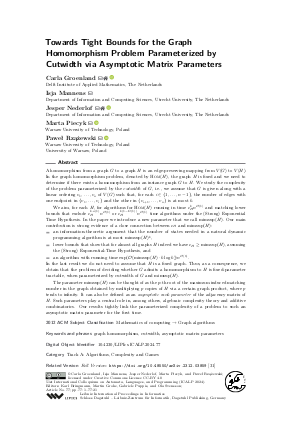LIPIcs.ICALP.2024.77.pdf
- Filesize: 0.85 MB
- 21 pages

 Creative Commons Attribution 4.0 International license
Creative Commons Attribution 4.0 International license











Feedback for Dagstuhl Publishing